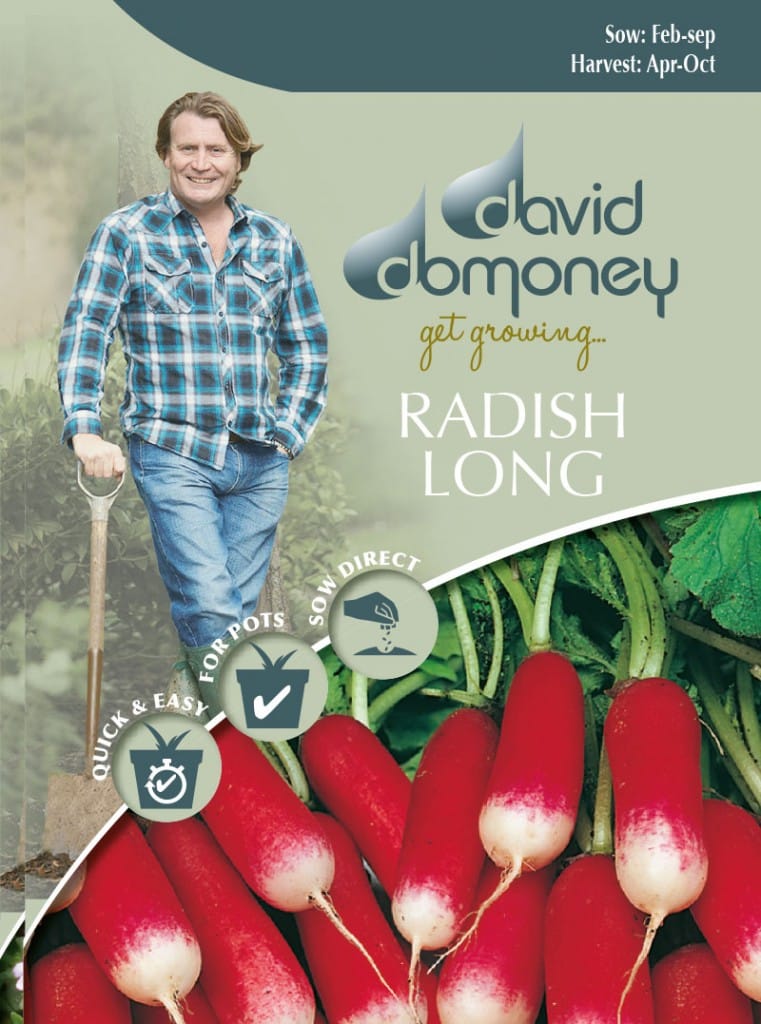Radish Long (Nelson)
A classic French breakfast type radish with attractive cylindrical red roots and a contrasting white tip. The roots are slightly larger than many globe shaped varieties and have a deliciously mild flavour. Wonderful eaten raw in salads or as a healthy snack. Radishes also make a colourful and tasty addition to stews, casseroles and stir-fries. Repeated sowings can provide continuous fresh crops from late spring all the way through to autumn.
Growing Advice

Sow outdoors February to September. Sow thinly 1.5cm deep directly where they are to grow, in rows spaced 20cm apart or into large containers. Keep the soil moist and weed free at all times. Seedlings should start to appear approximately 7-14 days. If necessary thin the crop as it grows by taking young roots evenly from the row. It is good practice to water well after thinning out, to wash any dislodged soil back around the roots of the remaining plants. Sow a new row every 2-3 weeks to extend the harvest period, ensuring there are always perfect, crisp young roots available.

Top Tips About Seeds
- Once the seed packet has been opened, the seeds can be stored in an airtight container until required for further sowings.
- Radish seeds will maintain their vigour for a good number of years.
- Although there are lots of seeds in a packet, repeat sowing is recommended, so they are unlikely to last more than one season.

Radishes can easily be grown in patio pots tubs, troughs and any other deep container. Ensure the compost does not dry out entirely and harvest them while young.
Keep well watered during dry spells as this will help prevent the roots from splitting. Cabbage root fly is the only common pest and in the unlikely event that it becomes a problem can be prevented by growing plants under a fine insect netting. Do not leave the tops of radishes or unwanted roots lying around after harvesting, the scent of them can attract cabbage root fly.
Harvest from April to October. Harvest alternate roots from the row, leaving more space for the remainder to grow on. Water the remaining roots well afterwards to replace any dislodged soil.

Ideas on how to use your Radish Long
Keep the soil moist as the seeds are germinating, if it dries out completely it can set them back. Radishes are such a fast growing crop they can be sown between rows of slow growing vegetables, to make best use of space.

Leave A Comment